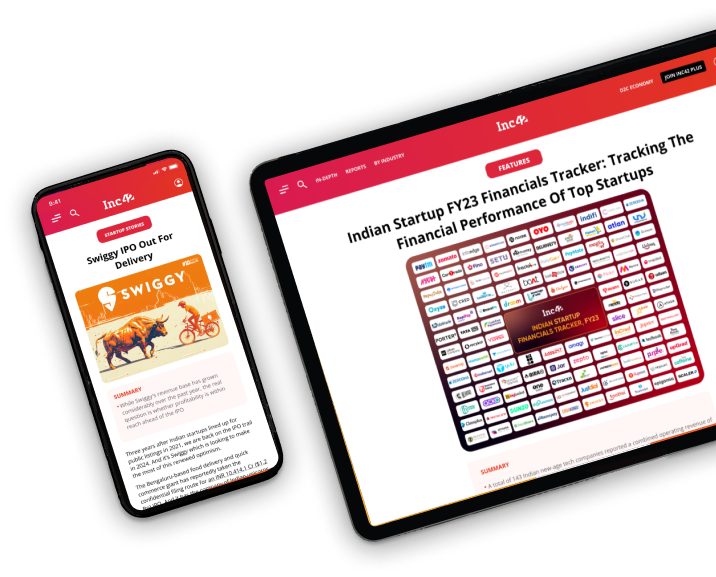
All entities processing cross-border transactions will come under RBI’s ambit and will be clubbed under ‘Payment Aggregator-Cross Border’ (PA-CB) class
In the circular, the central bank directed all ‘non-banks’ to apply for authorisation from RBI by April 30, 2024
Startups seeking cross-border payment licences will have to register themselves with the FIU-IND and should have a minimum net-worth threshold of INR 15 Cr at the time of submitting the application
With cross-border payments on the rise, the Reserve Bank of India (RBI) has now issued rules to directly regulate entities facilitating such transactions.
In a notification issued on Tuesday (October 31), the central bank said that all entities processing cross-border transactions for the import and export of goods and services in online mode will come under its direct regulation and will be clubbed under ‘Payment Aggregator-Cross Border’ (PAs-CB) class.
“Keeping in view the developments that have taken place in the area of cross-border payments, it has been decided to bring all entities facilitating cross-border payment transactions for import and export of goods and services under direct regulation of the RBI. Such entities shall be treated as PA-CB…”, said RBI in a circular.
The RBI also directed all relevant stakeholders involved in the settlement and processing of cross-border transactions for the import and export of goods and services, including authorised dealer (AD) banks, PAs and PAs-CB, to comply with certain rules and regulations.
The order was issued relevant sections of the Payment and Settlement Systems Act, 2007 and the Foreign Exchange Management Act (FEMA), 1999.
RBI’s Long List Of Compliance
In the circular, the central bank directed all ‘non-banks’ to apply for authorisation from RBI by April 30, 2024. The licences will allow stakeholders such as cross-border payment startups to offer services and will span three categories – import only, export only, and both import as well as export.
In the meanwhile, startups will be allowed to offer such services till further communication from RBI on their pending applications.
The central bank has also set a host of requirements for applicants seeking cross-border payment licences. As a prerequisite, startups and other non-banks already offering such services, at the time of the circular, will be mandated to register themselves with the Financial Intelligence Unit-India (FIU-IND). Besides, the RBI has also set a minimum net-worth threshold of INR 15 Cr at the time of submitting the application.
By March 2026, RBI mandates that these platforms have to have a minimum net worth of INR 25 Cr for authorisation to offer such services.
“As part of application, non-bank PA-CBs (existing on the date of this circular) shall submit a certificate from their statutory auditor (format as prescribed in the circular dated March 17, 2020), along with audited statement(s) of financial accounts (latest), to evidence the networth,” added the RBI.
The circular further mentions that in the case of imports only PA-CBs, if per unit goods/services imported is more than ₹2,50,000, then the concerned PA-CB shall undertake due diligence of buyer too. Also, payments for imports can be carried out using any payment instrument provided by authorised payment systems in India, except small PPIs.
For export-only PA-CBs, the settlement in non-INR currencies shall be permitted only for those merchants which have been directly onboarded by the PA-CB.
The central bank also warned platforms that those not complying with the net-worth rules will have to cease offering cross-border payment services by July 31, 2024.
RBI’s Tussle With Payment Aggregators
The payment aggregator framework was unveiled by the RBI in March 2020, and mandates all payments gateway operators to have a licence in order to acquire merchants and deploy digital payments solutions.
PAs enable merchants and ecommerce platforms to accept payments by deploying their technology infrastructure and streamlining online monetary transactions. However, since the regime was envisaged three years back, the process of acquiring a licence has become a difficult and cumbersome process for payment solutions providers.
Due to stringent rules set by the central bank, many PA applications still linger in limbo. Even names such as Paytm, LivQuik, among others, are yet to receive their licences while many others such as MobiKwik’s Zaakpay received it after filing multiple applications.
Meanwhile, a slew of new players have emerged that are trying to solve the pain points in the traditional cross-border payments ecosystem. This has spawned the rise of Indian startups such as XFlow, Hectar Global, LeRemitt, among others that cater to various segments within the space.
Meanwhile, global cross-border payment transaction flows continue to see heavy traction and saw a remarkable 13% increase from 2022, as per the Global Payments Report. The driving force behind this surge has largely been global interoperability and initiatives such as immediate cross-border payments (IXB), and unified payments interface (UPI).
As per a report, the global cross-border payments market is projected to grow to a market size of $238.9 Bn by 2027.






























 Ad-lite browsing experience
Ad-lite browsing experience